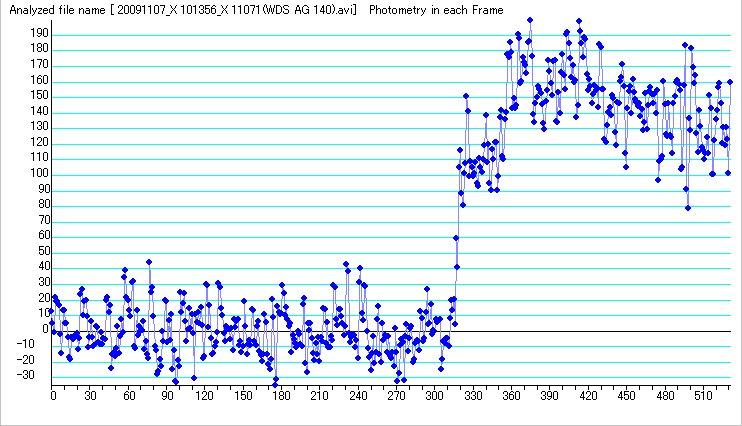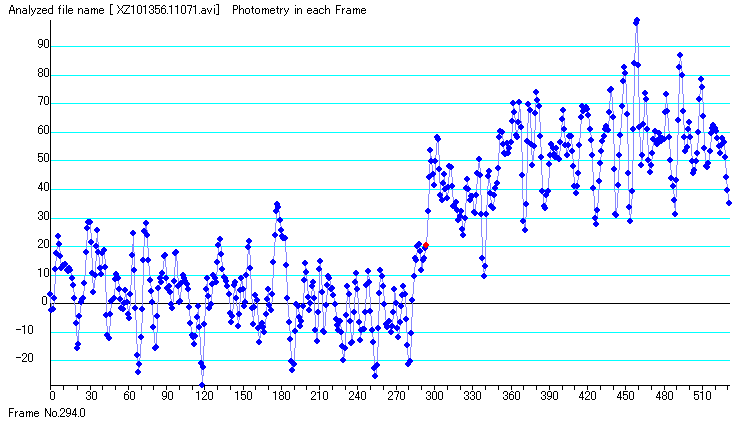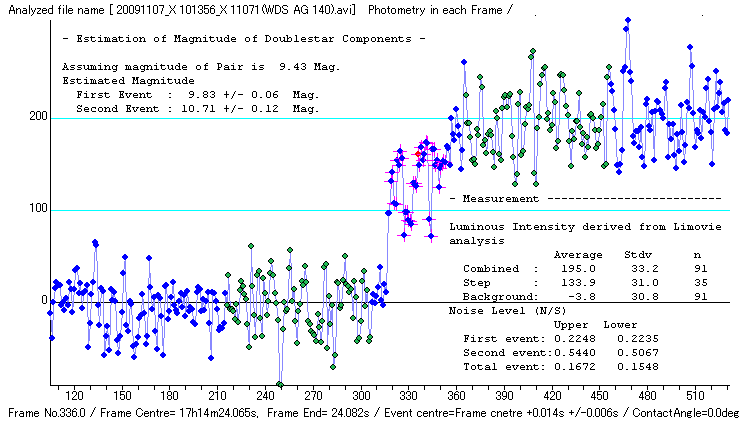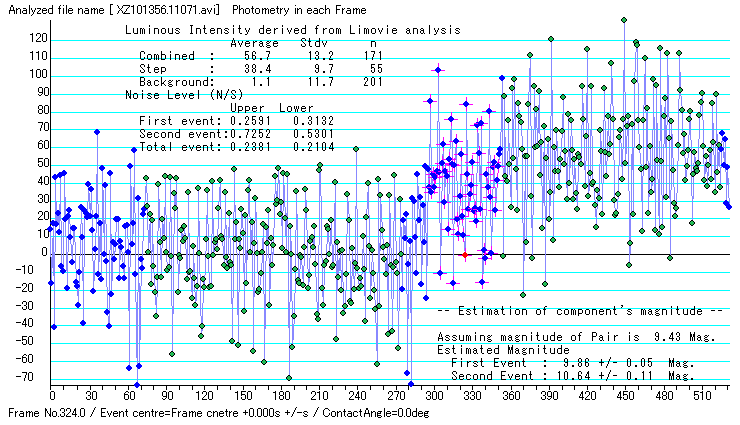Photomrtry and Astrometry for double star XZ101356
Jan. 11, 2009
Kazuhisa Miyashita
in Japanese
Catalogue details of this star
XZ101356 is following pair described in WDS.
Catalogue details
XZ 101356
RA = 7 25 59.0941 PM = -0.00093s
Dec = 22 5 14.998 PM = -0.0152"
Mv = 9.84, Mb = 10.33, Mr = 9.58 Spectrum __ Approx dia. .0001"
Star is the primary of the following pair
Name Cmpt Yr1 Yr2: PA1 PA2 : Sep1 Sep2 : Mag1 Mag2: #1 #2 mean
AG 140 1898 1992: 178.0 175.0: 1.600 1.900: 9.89 10.57: X101356 X 11071
WDS Discoverer codes
AG Astronomische Gesellschaft
|
|---|
Doublestar Report to IOTA coordinator
H. Karasaki's observation
2009 Nov 7 at 17h 14m
Star = X101356
Observer = H. Karasaki
Telescope = 20.0cm at 139 40 1.2 35 44 25.3
Double star details from the XZ catalogue
Star is the primary of the following pair
AG 140 1898 1992: 178.0 175.0: 1.600 1.900: 9.89 10.57: X101356 X 11071
Observation details
Star Mag = 9.84
Event = R D
PA = 279.004
AA = 271.959
l = 0.411
b = -0.237
RV = 0.4059
CCT = -173.87
T1 = 23.33
T2-T1 = 1.34
|
|---|
M. Kashiwagura's observation:
2009 Nov 7 at 17h 15m
Star = X101356
Observer = M. Kashiwagura
Telescope = 30.0cm at 140 8 40.4 38 22 46.9
Double star details from the XZ catalogue
Star is the primary of the following pair
AG 140 1898 1992: 178.0 175.0: 1.600 1.900: 9.89 10.57: X101356 X 11071
Observation details
Star Mag = 9.84
Event = R D
PA = 288.594
AA = 281.553
l = 0.395
b = -0.192
RV = 0.4130
CCT = 176.65
T1 = 32.47
T2-T1 = 1.87
|
|---|
Light curve and Explanation
i) Karasaki's observation (at Nerima, Tokyo, Japan)

Figure 1. Light curve derived from Karasaki's observation
|
Karasaki-san recorded XZ101356 event with two frames integration. And he found a clear step on the light curve.
ii) Kashiwagura's observation (at Oe, Yamagata, Japan)

Figure 2. Light curve obtained from Kashiwagura's observation
|

Figure 3. Light curve with Gaussian filtre applied.
|
Kashiwagura-san also observed XZ1013563 and sent me his video file. The target star is very dim and video is noisy.
so I analyzed with Gaussian filtre for image to reduce the background noise, and I also applyed the Gaussian filtre for light curve.
As a result of this analysis, rather clear step had been obtained.
Photometry
i) Karasaki's observation

Figure 4. Magnitude of two components from observation.
|
ii) Kashiwagura's observation

Figure 5. Magnitude of two components from observation.
|
Magnitude of components
Combined magnitude is assumed 9.13 mag. |
Brighter component Fainter component
Karasaki's observation 9.89 +/- 0.06 10.77 +/- 0.12
Kashiwagura's observation 9.86 +/- 0.05 10.64 +/- 0.11
|
|---|
Astrometry by IOTA coordinator
The effect of the Gaussian filter certainly looks to bring out the step clearly.
Karasaki-san also observed this event, so I have solved for the separation and PA.
These are PA 165.9¡ë, separation 1.34", estimated possible errors ¡Þ3.6¡ë and ¡Þ0.15".
Predicted PA 171.7¡ë, separation 2.0". Solution is attached.
The two observations look to be in good agreement.
Best wishes,
Brian
Astrometry by Brian Loader







